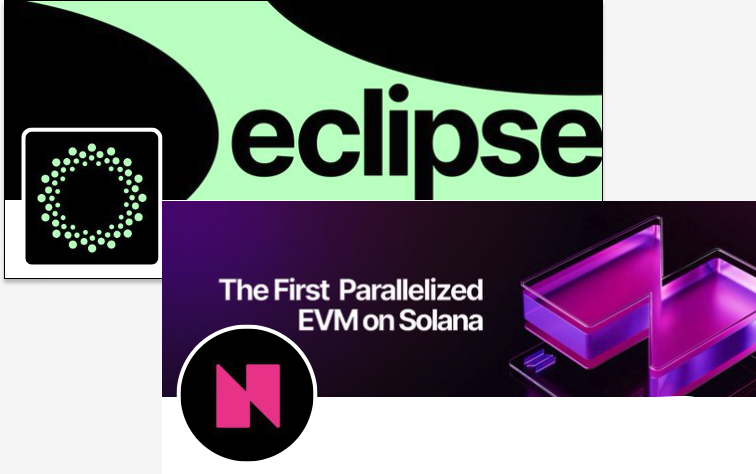In the rapidly evolving landscape of blockchain technology, interoperability and scalability are key factors that drive innovation and adoption. The recent developments involving the integration of Ethereum Virtual Machine (EVM) capabilities into the Solana blockchain represent a significant step forward in this journey. Projects like Neon, and potentially Eclipse, are at the forefront of this integration, offering new possibilities for developers and users alike.

What is EVM and SVM?
EVM (Ethereum Virtual Machine):
The EVM is the runtime environment for smart contracts in Ethereum. It's a crucial component of the Ethereum protocol, providing a sandboxed environment where all Ethereum accounts and smart contracts live. The EVM executes bytecode written in Solidity or other Ethereum-compatible languages, handling the internal state and computation of the network.
SVM (Solana Virtual Machine):
The Solana Virtual Machine, often referred to as Sealevel, is the runtime that processes transactions and executes smart contract code on the Solana blockchain. Solana's architecture, including its SVM, is designed for high throughput and scalability, utilizing a unique combination of proof-of-history (PoH) and proof-of-stake (PoS) consensus mechanisms.
The Ethereum and Solana Convergence
Ethereum, known for its pioneering role in supporting smart contracts and decentralized applications (dApps), has faced challenges related to network congestion and high transaction fees. Solana, with its high throughput and low-cost transactions, presents a compelling alternative. However, the challenge has been the lack of compatibility between the two, given their distinct virtual machines – the EVM for Ethereum and SVM (Solana's runtime environment) for Solana.
Neon Protocol: A Gateway to High Performance
Neon Protocol emerges as a bridge between these two worlds. By implementing an EVM compatibility layer on Solana, Neon allows Ethereum developers to deploy their existing smart contracts directly onto Solana’s network without any modifications. This means Ethereum dApps can leverage Solana’s superior transaction speeds and lower costs, dramatically enhancing their performance and user experience.
The mechanics behind Neon involve translating Ethereum's transaction and contract calls into Solana's system, allowing seamless execution while maintaining the integrity and functionalities of the original Ethereum dApps. This not only saves development time and costs but also opens up Ethereum’s rich ecosystem to faster and cheaper processing capabilities.
The Role and Potential of Eclipse
While details on Eclipse are less defined in public discourse, it is anticipated to play a similar role by enhancing EVM compatibility and possibly focusing on specific functionalities like improved security measures, specialized financial instruments, or better cross-chain communication. Such projects further solidify the foundation for a robust multi-chain ecosystem where the strengths of one blockchain can complement the weaknesses of another.
Implications for Developers and Users
For developers, the advent of tools like Neon means broader horizons. They can now choose to develop on Ethereum without worrying about scalability issues or opt for Solana without losing the community and tooling support of Ethereum. For users, this translates into more robust, scalable, and cost-effective applications that do not compromise on security or decentralization.
Looking Forward
As blockchain technology continues to mature, the focus will likely shift more towards such interoperability solutions that not only address current limitations but also pave the way for a more interconnected and efficient blockchain ecosystem. The initiatives by Neon, and potentially Eclipse, are just the beginning of what may become a standard practice in blockchain development and deployment.
With these developments, the blockchain community is poised to witness a new era of innovation, collaboration, and growth that could redefine what is possible in the world of decentralized technology.
Share your post on @outofthematrix community